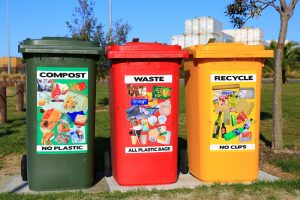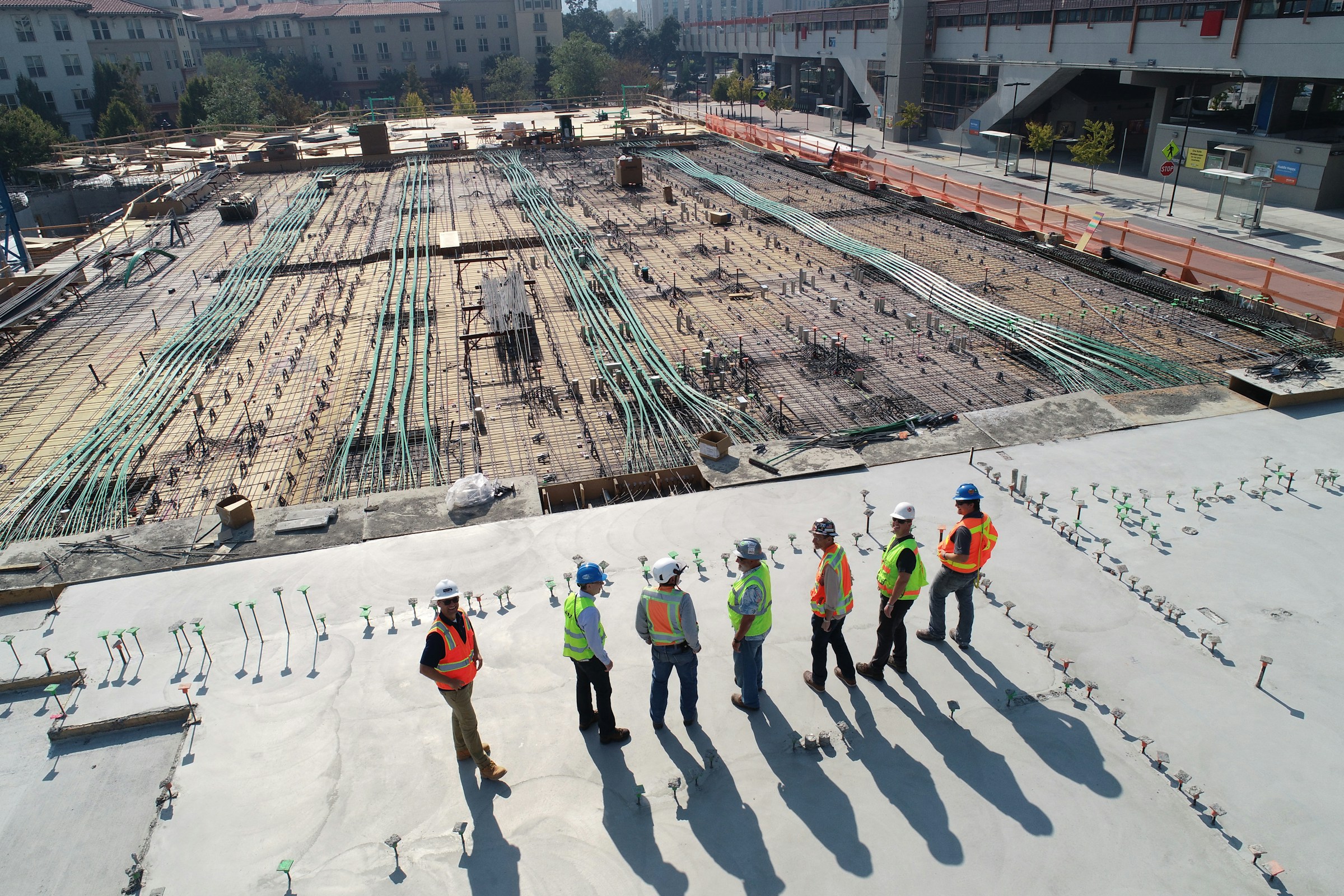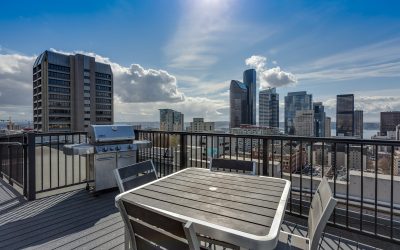Sustainability has been the name of the game in the construction industry for some time now. Energy-efficiency, reducing waste and other environmental impacts, and leveraging the ability to recycle or reuse when possible are all ways a construction company can do their part in making the world a better place.
Table of Contents
What is Sustainable Construction?
Sustainable construction is the use of renewable and/or recyclable building materials. It aims to reduce energy consumption and avoid harmful environmental impact. In fact, the construction industry alone is considered the largest user of global resources, making up nearly 50% of the worldwide consumption of raw materials, as well as a significant generator of waste.
By implementing sustainable construction practices in your next project, you’ll be contributing to the industry’s efforts to decrease its impact on the environment, reducing the effects of issues like climate change.
Sustainable Construction
Materials
The most obvious is using sustainable building materials. Using materials that put energy conservation and reduced waste at the forefront of your next building project is an excellent first step when it comes to promoting a cleaner, healthier environment by reducing the carbon footprint used in both their production at the factory and their use on your worksite.

Items like insulated doors and panels, low-VOC paint, recycled steel, renewable wood sources like bamboo, and more are just some of the materials you can use to make your construction site more environmentally friendly, while ensuring quality and a comparable variety or styles and colors versus non-renewable counterparts.
Methods
Sustainable and environmentally friendly construction sites are about more than materials used. There are some best practices when it comes to carrying out the project that will help your site be as environmentally friendly as possible:
– Limiting the materials used to reduce waste. Reducing waste can start before the project even breaks ground. When ordering materials, you want to order enough to get the job done, but not so much that you’re throwing out unused/spoiled items.
– Control waste not only by separating actual trash from recyclable materials, but by making the most of the material you do have.
– Construct green buildings which make energy efficient practices and the use of sustainable materials a top priority.
– Encourage and participate in adaptive reuse projects. “Adaptive” isn’t necessarily about making a building ADA compliant, although that may be involved in the process as well, depending on the use of the new space.
What is adaptive reuse? It’s taking an older building and repurposing it into something new. For example, the BOB (Big Old Building) in Grand Rapids, Michigan was constructed in 1903 as a grocery warehouse. To save it from being destroyed The Gilmore Collection bought the property and turned it into a downtown Grand Rapids destination for food and drinks, karaoke, various entertainment acts, and more.
– Managing construction sites to improve conservation efforts, like treating water on-site, creating a smoke-free work environment, recycling food containers and other recyclable waste, and more.
– Conserve energy by opting for energy-efficient systems like lighting and HVAC, and using sustainable and recycled materials like those mentioned above.
Benefits of an Environmentally-Friendly Construction Site
Creating a construction site that is environmentally friendly does more than just lessen the project’s impact on the environment. It can also impact the health and well-being of a community.
Promote Healthier Living
With all the research on environmental factors like better air quality, natural light, thermal conditions, and even ergonomic features for more comfortable use, it’s not surprise that our built environment has a significant impact on our physical, mental, and emotional health. Studies have also shown that people who live and work in green buildings report higher satisfaction than their counterparts who do not inhabit green buildings.

As we continue to learn more about the effects of green building and technology continues to advance, construction companies and building designers have been able to implement tools and practices such as dimmable lighting which reacts with daylight to adjust when daylight is a better source, real-time monitoring of people within a space to adjust temperature automatically, and more, with occupants reporting lowered stress levels, increased health and quality of life.
Reduce Waste
Pollution and depletion of our natural (non-renewable) resources, as well as the concern for climate change have been at the top of the list for individuals as well as companies to do their part in reducing the waste that gets put out into the environment. Technological advances and other actions are helping us to minimize and slow down the process and help promote a cleaner environment.

The advent of recycled building materials like steel, plastic, and even unique mixes of concrete that add waste products in an attempt to recycle (like timbercrete, ac composite of sawdust and concrete) what would otherwise be construction site waste.
Even the basics of separating trash from recyclables and encouraging workers to bring reusable water bottles or lunch bags makes large strides toward reducing the waste generated by your construction site.
Boost the Economy
Construction is just one industry known to be an excellent economic driver in the U.S., especially the green building industry. According to the US Green Building Council, the green building industry adds over $134 billion in labor income to working Americans.
Promote Cost Efficiency
Building owners will reap large monetary benefits over time, too. Implementing sustainable construction practices, along with sustainable building materials results in lower maintenance costs over the life of the building. Low-flow toilets and faucets reduce water consumption and bills, and energy-efficient doors, windows, and lighting offer a significant savings as well.

The up-front cost may make for a startling bottom line for your project, remember that the investment now will pay off in the future. What you save can be allocated toward other areas of your business, including driving business development, expansion, or rewarding employees with bonuses or raises.
Decreases Material Cost
Making your job sit environmentally friendly doesn’t mean compromising on quality or structural integrity. Using green building materials over their non-renewable counterparts guarantees energy efficiency, reduced waste – both at the factory during production and on the jobsite during use – and decreased material cost over time.
Additionally, strong quality products that resist rust, mold, and pests increases the life of materials and decreases the need to replace them. Using other materials that may need to be replaced every 5-10 years negates the up-front cost savings over time. Each repair or replacement is money and potential downtime. Choosing stronger, sustainable materials means you’ll likely make an upgrade for technological purposes before you ever have to think about replacements or repairs for system or product failures.
Reduce Your Carbon Footprint
Supporting and adopting green initiatives in your building projects and on your jobsites is an excellent way to reduce your carbon footprint, not only overall but on each specific job as well. According to the Environmental Protection Agency (EPA) the built environment accounts for 30% of all greenhouse gas emissions in the U.S.

Practicing sustainability and green building practices on your jobsite allows you to do something positive for the environment – and even your company! Clients will want to work with companies committed to sustainability and green building throughout a project. Build yourself a reputation for being a green builder and you could see a jump in business!
Final Thoughts
There are many ways to go green, both on your jobsite and in the long-term after the build. Creating an environmentally friendly construction site sets the tone for the environmental impact your project will have now and into the future.
The staff at Structr Group looks forward to speaking with you about your construction needs, and can help you navigate all the ways to make your construction project and the resulting structure as green and environmentally friendly as possible.
Contact us today!




0 Comments